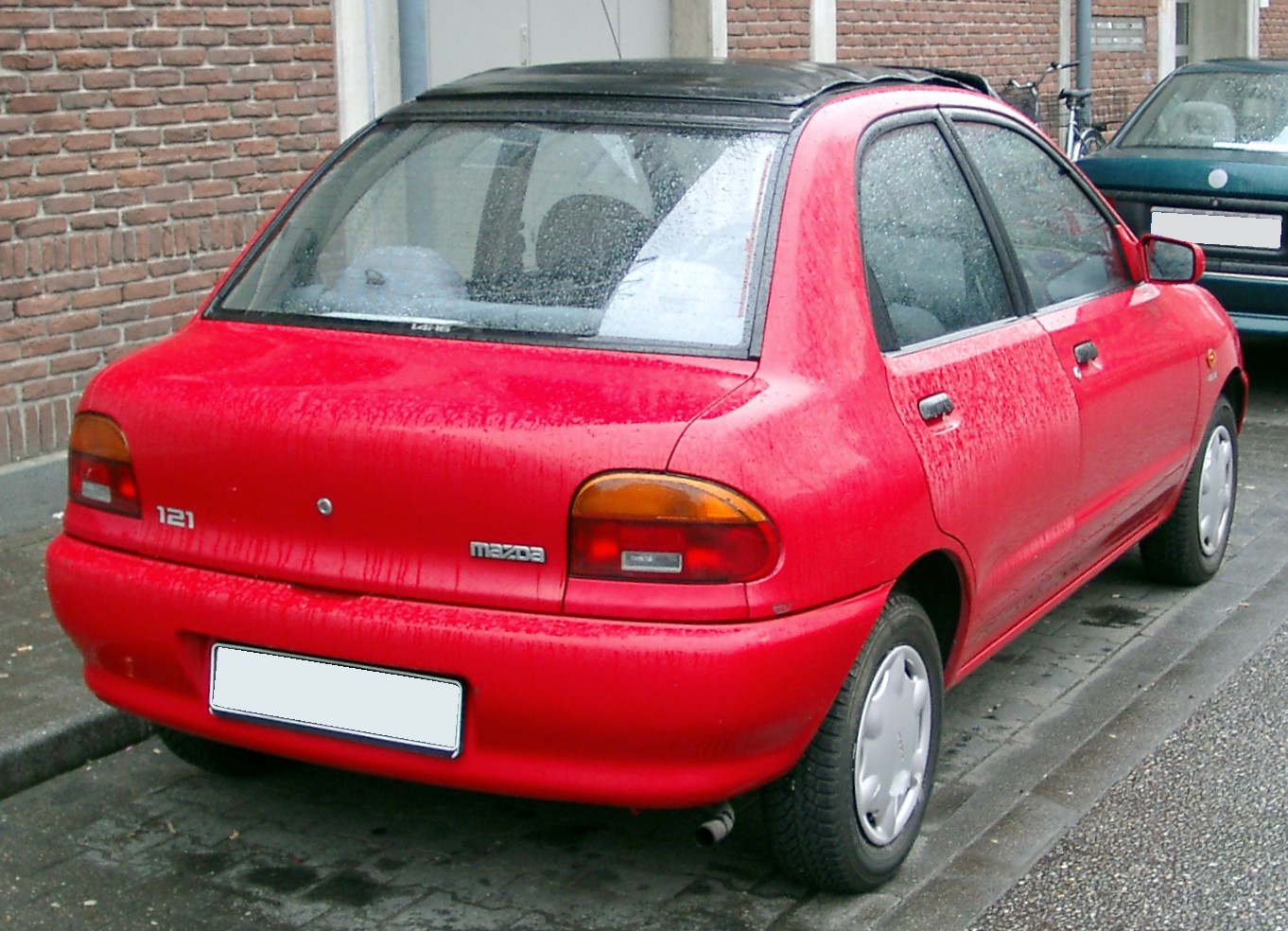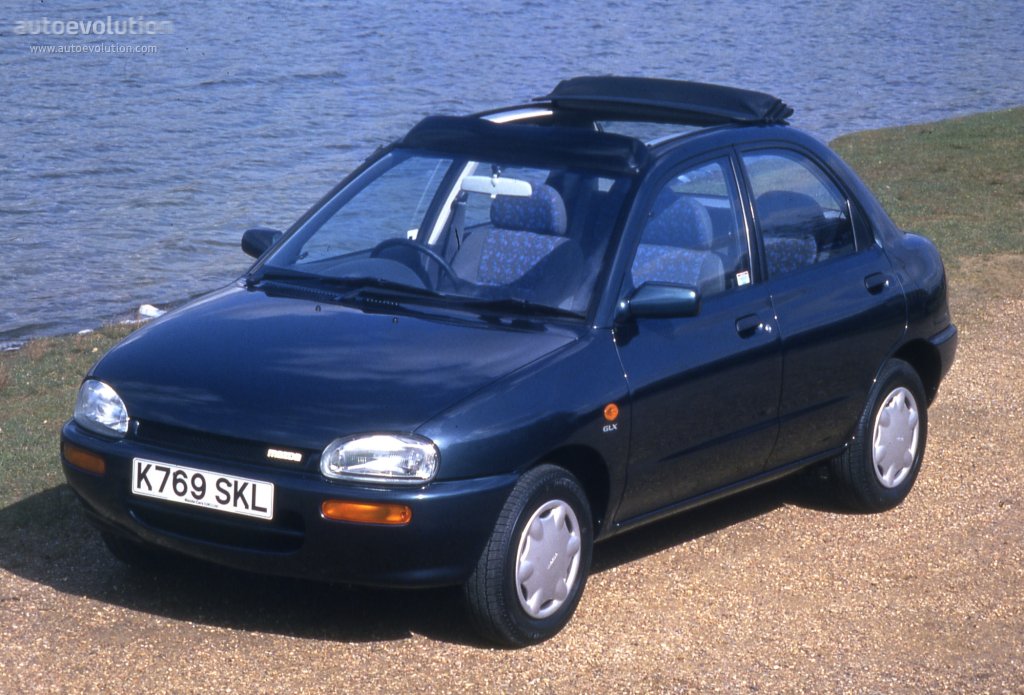Mazda 121
The Mazda 121 is a supermini car produced by the Japanese car manufacturer Mazda. It was built of 121 from early 1988 until early 2003, when production was discontinued with the introduction of the Mazda 2. During its construction period learned the 121 twice a model change.
121 (type DA, 1988-1991)
Mazda 121 three-door ( 1988-1991)
The until the spring of 1991, built by early 1988 and DA -called first generation of the 121 was a joint project with Ford and Kia, Mazda said the Kia Pride and the Ford Festiva possible.
The facilities of 121 was relatively sparse (there was no central locking, no electric. Windows and no power steering), but he bribed by a cleverly thought-out concept of space. Despite its compact dimensions, the interior had plenty of space, even in the rear. This was achieved by a sliding rear seat. The mechanism ( analogous to a front seat ) could both from the rear and from the trunk use. Thus, it was possible to win even 20 cm when carrying heavier loads in the trunk in the length of it. Furthermore, the backs of the seats in the rear could be folded down not only forward but also backward. This made it possible to obtain a complete lying surface including the front seats (after removal of the headrest ).
The DA was 121 with an electric fabric folding roof, called the Canvas Top, available as Mazda 121 CT.
121 ( type DB, 1991-1996 )
Mazda 121 (1991-1996)
The DB, which was built by the spring of 1991 to early 1996 (outside Europe: Autozam Revue ), was a Mazda - house development and was not a hatchback, but a notchback model. Because of the rounded appearance, this generation is often honored with nicknames like " egg ", " cheese cover ", " Buck Elk" or "Bubble Car". The idea of the design was to have no edges or corners in the car. This idea has also been widely implemented.
Unlike its predecessor, the DB has been processed already and better quality in the interior. Also, there were already here, depending on the model, a more extensive features such as an illuminated ignition switch, central locking and electric front windows. This model was available with air conditioning. Like its predecessor, was also the DB available with a canvas top. This was, however, in contrast to the DA, from front to back as well as open from back to front. The models differ, apart from the engine in the painting; were at the entry-level model, the bumper made of black plastic, so these were mitlackiert the higher-powered model in the body color. The same was true of the side mirrors.
121 (type JASM / JBSM, 1996-2003 )
Mazda 121 five-door hatchback (1996-2000)
In March 1996, the DB was supported by the as JASM ( five-door ) or JBSM ( three-door ) referred, replaced the third generation. This was again a joint development with Ford This time he shared with the Fiesta '96 the technical foundation and the exterior design. Both models could only be by the brand logo and differ slightly modified front and rear aprons.
Beginning of 2000 was the Mazda 121 a facelift, including the vehicles were now equipped with new lights and changed aprons. The differences between the two models remained slightly.
Contrary to popular Fiesta 121 of the third generation a great sales success was never granted. In April 2003, he was eventually replaced by the Mazda 2.
Mazda 121 three-door (1996-2000)

_1.3_sedan_(2009-06-06).jpg)








